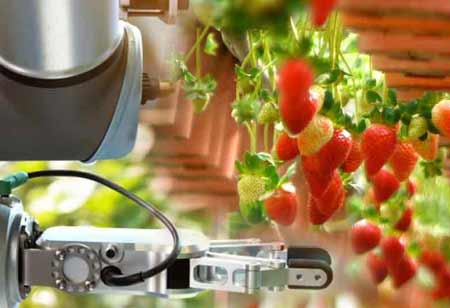Thank you for Subscribing to Agri Business Review Weekly Brief
Important Future Trends In Agriculture
Agriculture technology trends are helping modern farmers to make better,

By
Agri Business Review | Wednesday, September 21, 2022
Stay ahead of the industry with exclusive feature stories on the top companies, expert insights and the latest news delivered straight to your inbox. Subscribe today.
Future trends in agriculture are important for planners and all other stakeholders.
Fremont, CA: Agriculture technology trends are helping modern farmers to make better, faster, and smarter decisions and mold the future of farming.
Plenty of clues in the farms can help us predict the future of the agriculture sector.
Here are some important future trends in agriculture:
Increased Utilize of Aerial Imaging – More growers will become aerial imaging to better maintain their crops. Drone technology and satellite imaging enable farmers to see crop variations. By aerial imaging, farmers can manage their crops more accurately, increasing profits.
Regenerative Agriculture – Consumers are pushing organizations and individuals to adopt regenerative agriculture systems due to concerns regarding climate change effects and weather volatility. Then, this refers to practices that grow soil carbon sequestration, like decreased tillage and the use of cover crops.
While professionals debate whether the regenerative agriculture Industry will be a solution for climate change mitigation, growers agree these systems enhance soil health and fertility.
Accurate Yield Predictions – Few agriculture systems will enable farmers to swiftly predict yields before crops are harvested. Growers will be capable of finding buyers for all of their harvest, eradicating food waste, and increasing profits. Additionally, the yield monitoring method will aid inform the year’s variety selection and yield.
Modern Greenhouses – It has been changing from small-scale facilities to large-scale facilities. With the tremendous recent technological developments, the agriculture industry is witnessing a blossoming like never before.
Modern greenhouse systems are rising increasingly in large-scale industries. As the market has developed drastically, it has experienced clear trends in recent years. Modern greenhouses are rising day by day.
Diversification of Agriculture – Agriculture is not just meeting the food grains requirements but also other needs of growth. Agricultural has been diversified to generate commercial and horticultural crops, floricultural products such as flowers, orchids, etc., dairy and other animal husbandry products.
Furthermore, the demand for these products has been increasing. Liberalization of the economy has created abundant scope for the agricultural sector’s increased production and trade growth.
Data Integration – Data management software will enable growers to leverage this data to inform their decision-making. Also, this data can be utilized in real-time to make adjustments, like altering planting depth about available moisture.
Increasing Trend in Horticultural Output – The changing climate conditions and soil characteristics allow the growth of a wide variety of horticultural crops, including fruits, vegetables, spices, cashew-nut, coconut, cocoa, root, and tuber crops, areca-nut, medicinal and aromatic plants, etc. With the rise in the production of fruits, vegetables, and other types of horticultural products, the value of exportation of these products is also rising.
Livestock Farming Technology – Livestock farming technology includes the business of poultry farms, dairy farms, cattle ranches, or other livestock-related agribusinesses. This method can come from nutritional technologies, genetics, and digital technology. Sensor and data technologies have many benefits for the current livestock industry.
For example, it can improve livestock productivity by carefully catching sick animals and intelligently recognizing room for improvement. Computer vision mainly enables us to have all sorts of unbiased data that will summarise into meaningful, actionable insights.
Augmenting Hybridization – Hybrid seeds enable better adaptation in unfavorable soil and climatic conditions like saline soils and rain-fed ecosystems.
Precision Agriculture – Secular variability of the field leads to the areas with common characteristics called management zones. Management zones can also apply the appropriate inputs to achieve the best management to increase profitability and diminish environmental impact. Therefore, the precision agriculture method has been highly popular in the past few years.
Farm Automation – Farm automation is also accompanying “smart farming.” It makes farms more effective in the crop or livestock production cycle. Robotics companies are increasingly developing techniques like drones, autonomous tractors, robotic harvesters, automatic watering, and seeding robots.
Vertical farming– Vertical farming is a farm where crops are cultivated on vertically stacked structures. It can be a basis for the future of the agriculture industry. With the population anticipated to boom, the ability for vertical farms to take up less room than a conventional farm can make them more popular.
In addition, they utilized a tiny amount of water compared to the great outdoors. Vertical farming implies where plants, animals, and other life forms are grown for food, fuel, fiber, or other products.
The advantages are numerous in vertical farming. Vertical farming can be located inside recycled warehouses, greenhouses, or other buildings that would not be eligible for large-scale farming. It provides many benefits, like crops can be grown on a smaller land area; water can be recycled and used repeatedly. Vertical plants rise on minerals and do not need soil. Many agricultural products can be harvested more than once per year.





